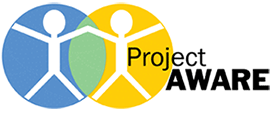Primary and secondary schools are responsible for providing a healthy and safe learning environment for schoolchildren in Washington State.
A healthy school environment keeps children’s minds alert and bodies strong. Poorly maintained school buildings can cause illness or make symptoms worse for children, teachers, and staff. This results in absences, missed schoolwork, and lower test scores. Schools that promote healthy environments can improve health and productivity for students and adults.

Washington State’s School Environmental Health and Safety Program works with local health jurisdictions, school districts, the Office of the Superintendent of Public Instruction, private schools, agencies and non-profits to promote incorporation of environmental health and safety into school facility design, operation, and maintenance. The program also provides support for implementation of the State Board of Health School Rule, Chapter 246-366 WAC.
Technical areas include controlling asthma triggers, science lab, art, and shop safety, hazardous waste management, injury prevention, playground safety, indoor air quality, ventilation, emergency response, communicable and vector-borne disease control, animals in schools, integrated pest management, cleaning and disinfection for health and safety, general safety, noise control, and lighting.
School Environmental Health Program Activities
— Work with, and provide technical assistance on school environmental health and safety issues to local health jurisdictions and school staff – including custodians, nurses, administrators, and maintenance and operations and risk managers.
— Provide interpretation and technical support on the State Board of Health School Rule (WAC 246-366), the K12 Health and Safety Guide, and the School Indoor Air Quality Best Practices Manual.
— Promote best practices through presentations, statewide committee participation, and work with school associations and state, local, and federal agencies.
— Available for phone and on-site consultation on school environmental health and safety issues, including indoor air quality.
— Available for presentations and trainings.
— Participate in the Department of Health and Office of the Superintendent of Public Instruction Coordinated School Health Program funded by the CDC.
Healthy Indoor Air is Important
— Over 1 million Washington children spend about 1300 hours in a school building each year.
— One half of U.S. schools have indoor environmental quality problems (Source: EPA).
— Children in classrooms with higher outdoor air ventilation rates tend to have higher scores on standard math and reading tests than children in poorly ventilated classrooms (Source: EPA).
— Poor indoor air quality not only can trigger asthma episodes in susceptible children but also can cause drowsiness, fatigue, lethargy, headache, inability to concentrate, and eye, nose, throat, and skin irritation – all of which compromise learning. (Source: School Health Policies and Practices Study).
— Indoor concentrations of pollutants are commonly three to five times higher than outdoor concentrations due to chemicals found in some conventional cleaning products, improper cleaning procedures, defective or ineffective climate control (HVAC) systems, interior finishes, exterior pollutant, personal care products and renovation projects (Source: EPA).
See resources provided by the School Environmental Health Program
Source: Washington State Department of Health

